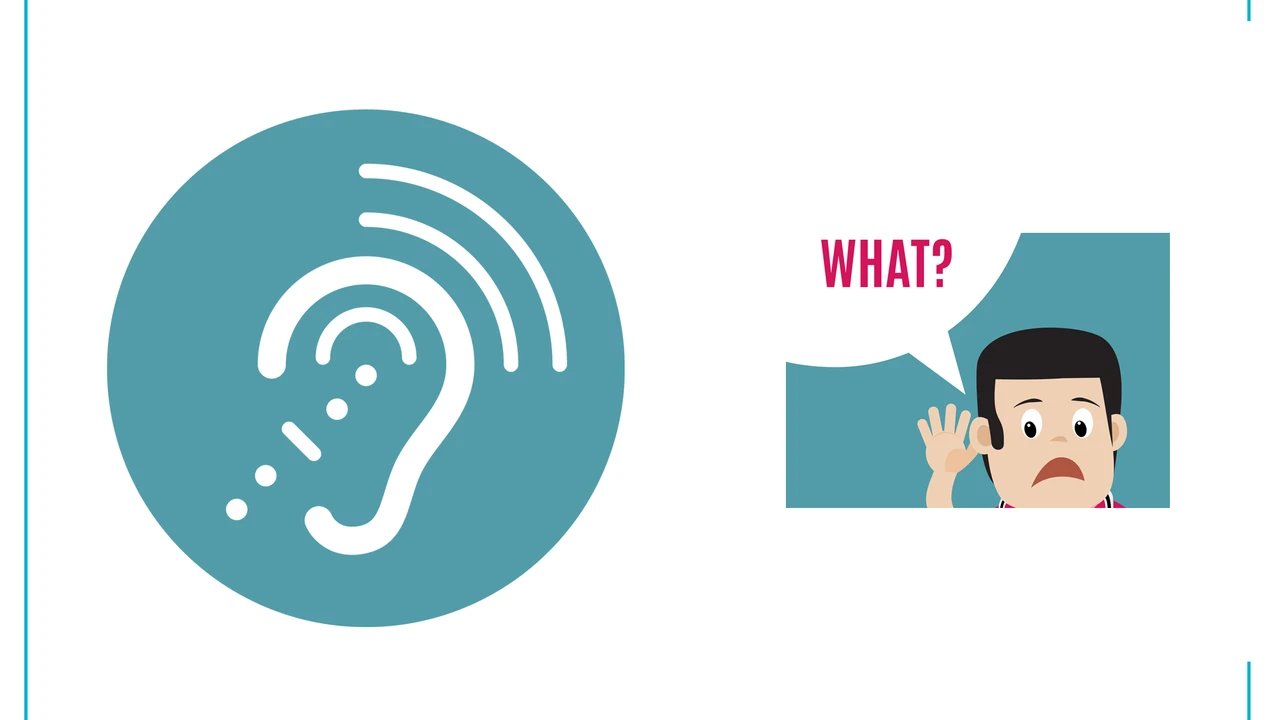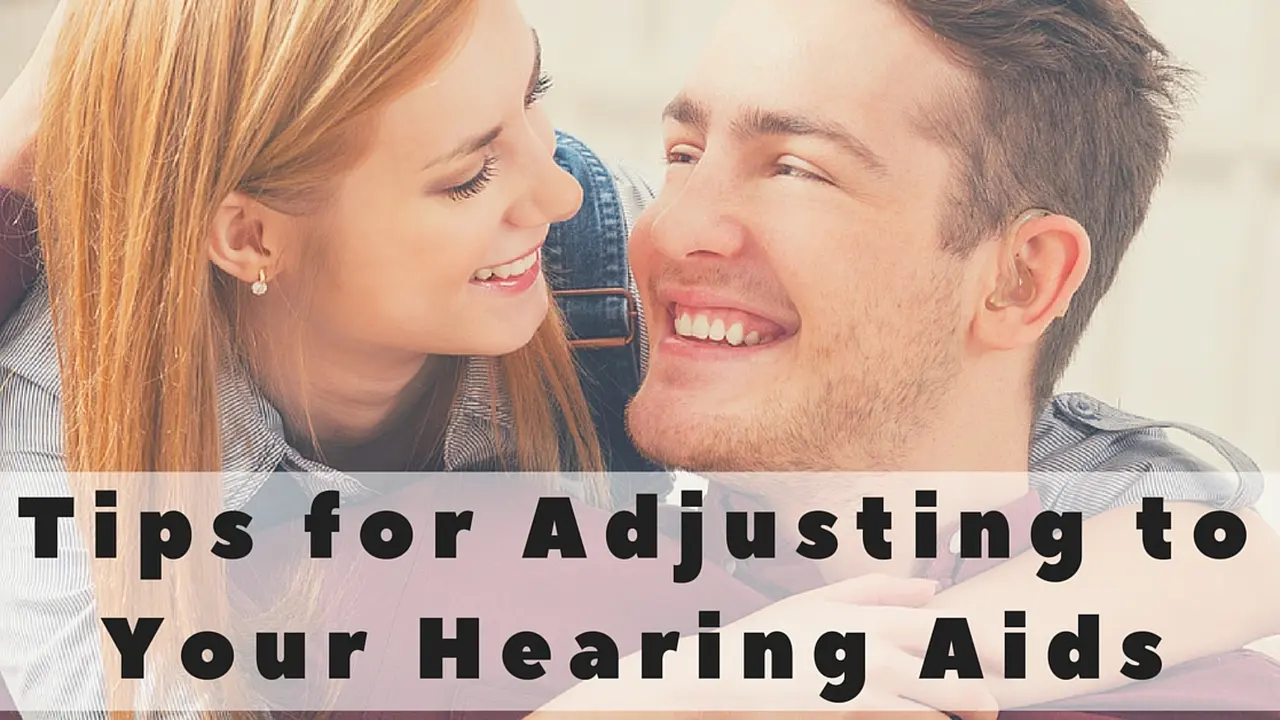Dealing With Hearing Aid Discomfort Solutions
Find solutions for common hearing aid discomforts like itching, pressure, or soreness. Learn how to ensure a comfortable and proper fit.

Dealing With Hearing Aid Discomfort Solutions
Hey there! So, you've got your hearing aids, and that's a fantastic step towards better hearing. But let's be real, sometimes they can feel a bit… off. Maybe they're itching, causing pressure, or just generally feeling sore. Don't worry, you're not alone! Many people experience some form of discomfort when they first start wearing hearing aids, or even after a while. The good news is, most of these issues have pretty straightforward solutions. This article is all about helping you troubleshoot those common hearing aid discomforts and get back to enjoying clear sound without the irritation.
Understanding Common Hearing Aid Discomforts and Their Causes
Before we dive into solutions, let's quickly chat about why these discomforts happen. Knowing the 'why' can often point you directly to the 'how to fix it.'
Itching and Irritation Around Your Hearing Aids
Ah, the dreaded itch! This is super common, especially with in-the-ear (ITE) or in-the-canal (ITC) style hearing aids, or even with earmolds for behind-the-ear (BTE) devices. What causes it? Well, it could be a few things:
- Dry Skin: Just like any other part of your body, the skin in your ear canal can get dry, leading to itchiness.
- Allergic Reaction: Though less common, some people might have a mild allergy to the materials used in their earmold or hearing aid shell. Acrylic and silicone are the most common materials.
- Earwax Buildup: This is a big one! Hearing aids can sometimes push earwax deeper into the canal, or the presence of the aid itself can stimulate more wax production, leading to blockages and irritation.
- Moisture Trapping: Your ear canal is a warm, moist environment. If your hearing aid traps too much moisture, it can create a breeding ground for bacteria or fungi, leading to itching and even infection.
- Improper Fit: If the earmold or hearing aid isn't fitting perfectly, it can rub against the skin, causing irritation.
Pressure and Soreness From Your Hearing Aids
Feeling like your ear is being squeezed or experiencing general soreness? This usually points to a fit issue. Your ear canal isn't a perfectly round tube; it has unique contours. If your hearing aid or earmold isn't custom-made or properly molded, it can press on sensitive areas.
- New Device Adjustment: When you first get new hearing aids, your ears need time to adjust to having something in them. A little pressure initially is normal.
- Earmold or Shell Too Large: If the custom-made part is slightly too big, it will exert constant pressure on the ear canal walls.
- Changes in Ear Shape: Believe it or not, your ear shape can change over time due to weight fluctuations, aging, or even just natural shifts. An earmold that once fit perfectly might now be causing pressure.
- Impacted Earwax: Again, earwax can be a culprit. A large plug of wax can make your hearing aid feel like it's pushing against something, causing discomfort.
Feedback and Whistling Sounds with Hearing Aids
While not a physical discomfort, feedback (that annoying whistling sound) can certainly be an auditory discomfort and often indicates a fit issue. It happens when amplified sound leaks out of your ear and gets picked up by the hearing aid's microphone, creating a loop. A poor seal is the primary cause.
Practical Solutions for Hearing Aid Discomfort
Alright, let's get to the good stuff – how to fix these issues! Remember, if discomfort persists or worsens, always consult your audiologist or hearing care professional. They are your best resource.
Addressing Itching and Irritation from Hearing Aids
- Keep Your Ears Clean and Dry: Gently clean the outer ear with a soft cloth. Avoid cotton swabs inside the ear canal, as they can push wax deeper. After showering or swimming, ensure your ears are completely dry before inserting your hearing aids.
- Moisturize (Carefully!): If dry skin is the culprit, your audiologist might recommend a very small amount of a specific ear-safe moisturizing cream or oil. Do not use anything without professional advice, as some products can damage your hearing aid or irritate your ear further.
- Check for Allergies: If you suspect an allergy, discuss it with your audiologist. They might be able to switch to a hypoallergenic material for your earmold or shell. Some manufacturers offer different material options.
- Regular Cleaning of Your Hearing Aids: This is crucial! Daily cleaning of your hearing aids, especially the part that goes into your ear, removes wax and debris that can cause irritation. Use the cleaning tools provided by your audiologist.
- Earwax Management: If you have excessive earwax, your audiologist can safely remove it. Never try to remove impacted earwax yourself with cotton swabs or other objects. Regular professional cleaning can prevent this issue.
- Consider a Dehumidifier or Drying Kit: For moisture-related irritation, a hearing aid dehumidifier or drying kit can be a game-changer. These devices remove moisture from your hearing aids overnight, preventing bacterial growth and keeping your ears healthier.
Relieving Pressure and Soreness from Hearing Aids
- Give It Time (Initial Adjustment): If your hearing aids are new, wear them for gradually increasing periods each day. Your ears need to get used to the sensation. A little initial pressure is normal, but it shouldn't be painful.
- Re-molding or Adjusting the Earmold/Shell: This is often the most effective solution. If the fit is off, your audiologist can take a new impression of your ear and order a new earmold or shell. They can also sometimes make minor modifications to existing earmolds in-office.
- Check for Earwax Buildup: As mentioned, impacted earwax can cause pressure. Have your audiologist check for and remove any blockages.
- Ensure Proper Insertion: Sometimes, discomfort comes from not inserting the hearing aid correctly. Your audiologist can demonstrate the proper technique. Make sure it's seated snugly but not forced.
- Consider a Different Style: If you're consistently experiencing discomfort with an ITE or ITC style, discuss with your audiologist if a BTE with a custom earmold or even a receiver-in-canal (RIC) style might be more comfortable for your ear anatomy. RICs often have smaller, softer domes that can be less intrusive.
Fixing Feedback and Whistling with Hearing Aids
- Reinsert Your Hearing Aid: Often, feedback is simply due to the hearing aid not being fully seated in your ear. Remove it and reinsert it carefully, ensuring a snug fit.
- Check for Earwax: A buildup of earwax can block the sound from reaching your eardrum, causing it to bounce back and create feedback. Get your ears checked for wax.
- Volume Adjustment: If your hearing aid volume is set too high, it can sometimes cause feedback. Try lowering the volume slightly.
- Earmold/Dome Check: If you have a BTE with an earmold, check if the earmold is cracked or shrunk. If you have a RIC with a dome, ensure the dome is the correct size and isn't torn or dislodged. Your audiologist can replace these.
- Professional Adjustment: If none of the above work, your audiologist can make adjustments to the hearing aid's programming or order a new earmold to ensure a better seal. Modern hearing aids also have advanced feedback cancellation systems that can be optimized.
Recommended Products and Accessories for Enhanced Comfort and Care
Beyond professional adjustments, there are several products and accessories that can significantly improve your hearing aid comfort and overall experience. Let's look at some popular and effective options.
Hearing Aid Cleaning and Drying Kits for Longevity and Hygiene
Proper cleaning and drying are your first line of defense against discomfort and device malfunction. These kits are essential for all hearing aid users.
Electronic Drying Stations
- Product Example: Dry & Store Global II or PerfectDry Lux
- Description: These are electronic devices that use gentle heat and/or UV light to dry and sanitize your hearing aids overnight. They remove moisture that can lead to itching, infections, and damage to the internal electronics.
- Usage Scenario: Ideal for daily use, especially if you live in a humid climate, sweat a lot, or experience frequent ear infections. Simply place your hearing aids in the unit before bed.
- Comparison: The Dry & Store Global II is a more robust option, often used by professionals, offering a longer drying cycle and sometimes a desiccant brick. The PerfectDry Lux is more compact, faster, and often more budget-friendly, using UV-C light for sanitization.
- Estimated Price Range: Dry & Store Global II ($150-$200), PerfectDry Lux ($50-$80)
Manual Drying Kits
- Product Example: Hearing Aid Dehumidifier Jar with Desiccant
- Description: A simple, cost-effective solution. These are small jars containing a desiccant (drying agent) that absorbs moisture from your hearing aids.
- Usage Scenario: Great for occasional use, travel, or as a backup. Less effective than electronic dryers but still beneficial.
- Comparison: Much cheaper and requires no power. The desiccant needs to be replaced or recharged (often by microwaving) periodically.
- Estimated Price Range: ($10-$25)
Cleaning Tools
- Product Example: Hearing Aid Cleaning Kit (brushes, wax loops, vent cleaners)
- Description: A basic kit usually includes a small brush to remove wax and debris, a wax loop to clear earwax from the sound port, and a vent cleaner for ITE/ITC aids.
- Usage Scenario: Daily cleaning to prevent wax buildup and maintain sound quality.
- Estimated Price Range: ($5-$15)
Comfort-Enhancing Accessories for Hearing Aids
Sometimes, a small accessory can make a big difference in how your hearing aids feel.
Ear Lubricants and Creams
- Product Example: Miracell ProEar Ear Drops or Oto-Ease Lubricant
- Description: These are specially formulated drops or creams designed to moisturize the ear canal and make hearing aid insertion easier and more comfortable. They can help with dryness and mild irritation.
- Usage Scenario: For individuals experiencing dry, itchy ears or difficulty inserting their hearing aids. Apply a tiny amount to the outer ear canal or the hearing aid itself before insertion. Always consult your audiologist before using any product in your ear canal.
- Comparison: Miracell ProEar is often recommended for its natural ingredients and moisturizing properties. Oto-Ease is a popular lubricant specifically for easier insertion.
- Estimated Price Range: ($15-$30)
Hypoallergenic Domes and Earmold Materials
- Product Example: Various brands offer hypoallergenic silicone or acrylic options.
- Description: If you have sensitive skin or suspect an allergy to standard materials, your audiologist can order domes or custom earmolds made from hypoallergenic alternatives.
- Usage Scenario: For users experiencing persistent itching, redness, or irritation that doesn't resolve with cleaning and drying.
- Comparison: These are typically custom-ordered through your audiologist and might be a slightly higher cost than standard materials. The benefit is significantly reduced allergic reactions.
- Estimated Price Range: (Varies, often included in the cost of the hearing aid or a small upcharge for custom earmolds)
Hearing Aid Retention Devices
- Product Example: EarGear Hearing Aid Sleeves or SportLocks
- Description: These are small, often silicone or fabric sleeves or clips that help secure your hearing aids, especially BTE or RIC models, to prevent them from falling out during physical activity. While primarily for retention, a more secure fit can sometimes reduce rubbing and discomfort.
- Usage Scenario: For active individuals, children, or anyone concerned about their hearing aids falling out.
- Comparison: EarGear offers protective sleeves that also shield against moisture and dirt. SportLocks are small, discreet clips that attach to the hearing aid and then to your ear.
- Estimated Price Range: ($20-$40)
When to See Your Audiologist for Hearing Aid Discomfort
While many minor discomforts can be managed at home, it's crucial to know when to seek professional help. Your audiologist is your partner in hearing health and can diagnose and resolve issues that home remedies can't.
Persistent Pain or Severe Discomfort with Hearing Aids
If you're experiencing sharp pain, intense pressure, or discomfort that doesn't subside after a day or two, don't wait. This could indicate a significant fit issue, an infection, or another underlying problem that needs immediate attention. Ignoring it can lead to more serious complications or simply make you stop wearing your hearing aids, which defeats the purpose.
Signs of Infection Around Your Hearing Aids
Be on the lookout for any signs of an ear infection, which can be exacerbated by hearing aid use if hygiene isn't maintained or if there's a poor fit. These include:
- Redness and swelling in or around the ear canal.
- Discharge or pus from the ear.
- Increased pain or tenderness.
- Fever (in more severe cases).
If you notice any of these symptoms, remove your hearing aids and contact your audiologist or doctor right away. They might prescribe ear drops or oral antibiotics.
Unresolved Feedback or Poor Sound Quality with Hearing Aids
If you've tried the basic troubleshooting steps for feedback (reinsertion, checking for wax, lowering volume) and it persists, or if your sound quality suddenly declines, it's time for a professional check-up. This could indicate a damaged hearing aid component, a need for reprogramming, or a change in your hearing loss that requires adjustment.
Changes in Your Ear Canal or Hearing Aid Fit
Our bodies change over time, and so can our ear canals. Weight loss or gain, aging, or even just natural shifts can alter the shape of your ear. If your once-comfortable hearing aids suddenly feel loose, too tight, or cause new pressure points, your audiologist can assess the fit and recommend a new earmold or shell if necessary.
Allergic Reactions to Hearing Aid Materials
If you develop a rash, persistent itching, or swelling that you suspect is an allergic reaction to the hearing aid material, your audiologist can help identify the allergen and explore alternative materials. This is a less common but important consideration.
Tips for Long-Term Hearing Aid Comfort and Care
Making your hearing aids a comfortable part of your daily life involves consistent care and proactive measures. Here are some tips to keep you feeling good and hearing great:
Establish a Daily Cleaning Routine for Your Hearing Aids
Just like brushing your teeth, cleaning your hearing aids should be a daily habit. Use the brush and wax loop provided to clear any visible wax or debris from the sound port and microphone. Wipe down the surface with a soft, dry cloth. This prevents buildup that can cause both discomfort and performance issues.
Utilize a Drying Kit Every Night for Your Hearing Aids
Whether it's an electronic dryer or a desiccant jar, make it a habit to place your hearing aids in a drying kit every night. This removes moisture, which is the enemy of electronics and a friend to bacteria. It significantly extends the life of your devices and reduces the risk of ear infections.
Regular Audiologist Check-ups and Adjustments for Hearing Aids
Don't wait for a problem to arise. Schedule regular follow-up appointments with your audiologist, typically once or twice a year. During these visits, they can:
- Check your hearing aids for proper function.
- Clean them thoroughly with professional tools.
- Inspect your ear canals for wax buildup or irritation.
- Make programming adjustments based on changes in your hearing or listening needs.
- Assess the physical fit and recommend modifications if necessary.
Stay Hydrated and Maintain Good Ear Hygiene
General health practices contribute to ear health. Staying hydrated can help prevent dry skin in your ear canal. Avoid inserting anything smaller than your elbow into your ear canal – this means no cotton swabs, hairpins, or keys! These can push wax deeper, scratch the delicate skin, and cause irritation or infection.
Gradual Adaptation to New Hearing Aids
If you're new to hearing aids, or have just received a new pair, ease into them. Start by wearing them for a few hours a day in quiet environments, gradually increasing wear time and exposure to different soundscapes. This allows your brain and your ears to adapt without feeling overwhelmed or overly pressured.
Communicate Openly with Your Audiologist About Hearing Aid Comfort
Your audiologist can't read your mind! If something feels off, even if it seems minor, communicate it. They have the expertise and tools to diagnose and resolve most comfort issues. Don't suffer in silence; your comfort is key to successful hearing aid use.
Ultimately, your hearing aids should be a seamless extension of your hearing, not a source of constant annoyance. By understanding the common causes of discomfort, applying practical solutions, utilizing helpful accessories, and knowing when to seek professional help, you can ensure a comfortable and effective hearing aid experience. Here's to clear hearing and happy ears!
:max_bytes(150000):strip_icc()/277019-baked-pork-chops-with-cream-of-mushroom-soup-DDMFS-beauty-4x3-BG-7505-5762b731cf30447d9cbbbbbf387beafa.jpg)






